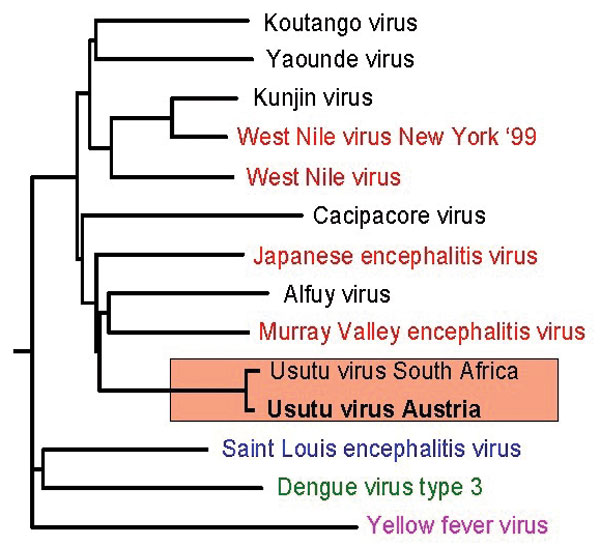Volume 8, Number 7—July 2002
Research
Emergence of Usutu virus, an African Mosquito-Borne Flavivirus of the Japanese Encephalitis Virus Group, Central Europe
Figure 2

Figure 2. Phylogenetic analysis of several members of the Japanese encephalitis virus (JEV) group and selected other mosquito-borne flaviviruses demonstrates the close genetic relationship of the Austrian Usutu virus (USUV) isolate with the South African USUV (red underlay); well-known members of the JEV group are highlighted in red; distinct branches are formed by Saint Louis encephalitis virus, Dengue virus (type 3), and Yellow fever virus. The partial nucleotide sequence of the Austrian USUV isolate used in the phylogenetic tree has been deposited in the GenBank database under accession no. AF452643.
Page created: July 16, 2010
Page updated: July 16, 2010
Page reviewed: July 16, 2010
The conclusions, findings, and opinions expressed by authors contributing to this journal do not necessarily reflect the official position of the U.S. Department of Health and Human Services, the Public Health Service, the Centers for Disease Control and Prevention, or the authors' affiliated institutions. Use of trade names is for identification only and does not imply endorsement by any of the groups named above.